Too often, the maxim, “Money can’t buy you happiness, but it can buy you more horsepower — and that’s the same thing” is the modus operandi of so many performance enthusiasts. And sure, in today’s world of non-invasive ECU reflashes, larger and far more efficient intercoolers, and no short supply of supercharger rebuilders, added horsepower is as easily attainable as ever before. [And to think, only a decade ago, the industry was decrying the influx of “big, heavy and slow” 4-strokes! -Ed] Yet, added horsepower is only as good as the craft its propelling, and no amount of additional grunt can make a heavy watercraft behave like a machine half its heft. This of course, has a great deal to do with mass effecting drag coefficients but for today’s discussion, we’re going to focus mainly on the earlier topic.
Coming to a Better Understanding
Here’s a simple example: Imagine a 1,000-horsepower car that weighed 1,000 pounds. It would have a power-to-weight ratio of 1:1 (or one-to-one) as 1,000 divided by 1,000 equals 1. Now, imagine a 1,000-horsepower car that weighs 2,000-pounds. Obviously, the second car is slower than the first, as its power-to-weight ratio is half, or .5:1, as 1,000 divided by 2,000 is a half. A 1,000-horsepower in a 3,000-pound car would be 1,000 divided by 3,000, equaling .333:1, or for every 1 horsepower there is 3 pounds of weight, and so on. So, effectively, the higher the first number in the power-to-weight ratio, the more lively the vehicle will be.
As a few functioning examples, we’ll use György Kasza’s all carbon fiber RXP-X which he rode to win a World Championship in Pro Runabout Open at this year’s IJSBA World Finals, and V-Tech Tuned’s turbocharged Sea-Doo Spark kit. In the case of V-Tech Tune’s turbocharged Spark, the numbers are rather impressive: beginning with a stock 405-pound 2-up Spark, V-Tech’s kit adds just under 20-pounds in the form of a turbo, BOV, intercooler and plumbing, pushing the weight to roughly 430-pounds. Yet, when installed and tuned to perform at its peak, the boosted Spark produces an impressive 200-horsepower. When calculated, that gives V-Tech’s Spark a power-to-weight ratio of .46:1, a number far superior to any supercharged PWC available at dealerships today (see below).
Now, to push things even further, we take a look at Kasza’s RXP-X. Hewn completely out of carbon fiber, Kasza’s Sea-Doo yields a total weight of 639-pounds. Powered by a radically tuned 1630cc Rotax 3-cylinder pressed by a fully water-jacketed Borg Warner turbocharger and factory Sea-Doo intercooler, his RXP-X is fed a diet of E100 ethanol. At wide-open, the heavily modded RXP-X is capable of a staggering 650-horsepower but was detuned to a engine-preserving 500HP for competition use. When 639-pounds is divided by 500-horsepower, we get a ratio of .78:1. When that is changed from 500 to 650-horsepower, we get an incredible 1.02:1, or literally a ratio of one-horsepower-per-pound. This of course, is what the aftermarket and professional racers can accomplish; but for 99-percent of consumers, we’re going to focus on factory equipment from here on out:
Big Power From Small Packages
In the past three years, we’ve seen quite a bit of effort in developing powerful-yet-lightweight engines. The powerplants to emerge from this trend are both groundbreaking in their technology, as well as hugely beneficial in their advancements. Sea-Doo set the wheels in motion with its ACE 900 (Advanced Combustion Efficiency) 3-cylinder, four-stroke found first in the Polytec-hewn Spark and later in the 2017 GTI and GTI SE. The all aluminum plant (as well as all subsequently-equipped ACE derivatives introduced by Rotax since 2015) employs a new plasma coating applied directly to the aluminum casing’s cylinder walls via a proprietary thermal spraying process to replace the heavy steel pressed-in sleeves.
Equally, Rotax’s redesigned cylinder head employs dual camshafts, operating the four valves-per-cylinder aiding in the ACE’s advanced combustion efficiency (get it?). A superior intake and exhaust runner with a tighter quench makes the head a winner, particularly in producing the High Output (HO) 90-horsepower tune. And aftermarket reflashes dial up the wick to 110-ponies without harm. Displacing only 998cc’s, the scant 1-liter tips the scales at merely 100-pounds, placing its power-to-weight ratio at .9:1, or 0.9-horsepower per 1 pound (that is, using the stock 90HP as our baseline). Going up from there, the ACE 1500 HO, producing an advertised 230-horsepower and weighing 194-pounds, earns a ratio of 1.2:1; the mightier ACE 300 fetching a ratio of 1.6:1 at the estimated same weight.
Last year, Yamaha’s response was the all-new TR-1 1,049cc (1-liter) 3-cylinder 4-stroke powerplant, which replaced the MR-1 4-cylinder. The new dual-overhead cammed, 3-cylinder not only provides 13-percent more horsepower (an official 125 horsepower) than the old engine, but also shaves off 20-percent of the outgoing engine’s heft, as well as an impressive 40-percent of its overall size. For 2017, the TR-1 gets a slightly modified sibling, the TR-1 EX, with a lighter, single-piece flywheel/coupler and redesigned exhaust log-style manifold, dropping the output to an even 100-horsepower. Weighing in at 124-pounds, the TR-1 wields a ratio of 1:1, and .9:1 for the lighter-yet-less powerful TR-1 EX.
Although Kawasaki shook the motorcycle industry to its foundations with the insanely over-powered 300-horsepower supercharged 1-liter (998cc) 4-cylinder in the H2R superbike (and the subsequent street-legal H2 version touting 197 ponies), the engine that is coming in the new SX-R is the brand’s tried-and-true 1.5-liter (1,498cc) 4-cylinder four-stroke from the Ultra LX and STX-15F. Producing 160-horsepower at a spine-breaking 208-pounds, this places the Kawasaki’s ratio at .76:1, well below that of any of the above engines.
Full Scale War, Not Horsepower War
Manufacturers have learned that the easiest route to superior fuel efficiency can be found in shaving weight and holding back on engine consumption; Sea-Doo’s ’17 GTI SE ACE 900 HO is a stellar example of this. The manufacturer slashed a staggering 150-pounds from the Recreational-sized runabout by replacing the traditional FMC hull with a PolyTec one and powering it with the 90-horsepower ACE 900, dropping the machine from 790 to 640-pounds.
Of course, Sea-Doo’s PolyTec has allowed BRP to maintain its place as the only manufacturer to produce a 2-up runabout that weighs 405-pounds (a near 150-pounds less than Kawasaki’s soon-to-be-released SX-R standup). BRP has revealed – as have the tens of thousands of Spark owners have discovered – that a day’s worth of fun and thrills can be had with minimal horsepower if the craft can remain lightweight and nimble (the new freestyle-friendly Spark Trixx is founded on this principle) – and so has Yamaha in some regard, as all of the brand’s moves have been in building race-ready, supercharged runabouts with lighter materials:
Yamaha’s decision to completely retire the FZ series upset a great deal of performance enthusiasts, many belittling the new GP1800 for lacking the characteristics that so many have become accustomed to in the outgoing FZ. Yet, the brilliance was found in the light GP1800 platform: it comes in at 769-pounds – 22-pounds less than the FZR – yet with all of the power of the outgoing machine. And unlike the FZR, the GP1800 comes with features previously unavailable to its predecessor: RiDE, Yamaha’s quick-response electric trim system, and a folding swim step. (It also is significantly more affordable than the outgoing FZR; the GP’s $13,999 MSRP handily beating out the FZR’s $14,799 price tag by $800). Without those items, the GP is estimated to be a full 50-pounds less than the retired FZR.
More importantly has been Yamaha’s commitment to its NanoXcel and NanoXcel2 technology. Dedicating years of development of a “nanotechnology-engineered material” that is light yet maintains structural integrity, Yamaha engineers, “used a combination of ‘nano’ clay and glass micro-bubbles to develop a new stronger resin that uses less material. The glass micro-bubbles used in NanoXcel 2 are smaller and stronger than other filler materials, contributing to the strength, rigidity and lightweight of the new hulls and decks.” The result was an immediate 35-pound and 46-pound drop in weight from the Yamaha FZR and FX SVHO, respectively.
Although top speeds are still arbitrarily capped via throttle positioning sensors and GPS speedometers (that is, when talking strictly about factory-floor stock models), power-to-weight superiority is easily seen in radar-tested acceleration runs. While such numbers aren’t readily available without exhaustive hours and dollars spent to track each unit and correct for variances in air and water temperatures (as well as barometric pressure, etc.), we do have a breakdown of some major players in the field of performance watercraft and their power-to-weight ratios:
Kawasaki*
’17 Ultra 310X 1,051.8 lbs. (curb) 918 lbs. (dry weight) 310HP .33:1
’17 Ultra 310R 1047.4 lbs. (curb) 914 lbs. (dry weight) 310HP .34:1
’17 Ultra 310LX 1,073.8 lbs. (curb) 940 lbs. (dry weight) 310HP .32:1
’17 SXR 550 lbs. 160HP .29:1
*All Kawasaki units are advertised with a curb weight, including full oil and gas being factored into the weight. We’ve calculated for 20 gallons of fuel at 6.183 pounds per gallon equating 124 pounds, and 5 quarts of oil, equaling 9 pounds; all totaling 133 pounds removed from each total units’ advertised curb weight.
Sea-Doo
’17 RXP-X 300 850 lbs. (dry weight) 300HP .35:1
’17 RXT-X 300 914 lbs. (dry weight) 300HP .33:1
’17 GTX Limited 300 909 lbs. (dry weight) 300HP .33:1
’17 RXT 260 824 lbs. (dry weight) 260HP .31:1
’17 GTR-X 230 821 lbs. (dry weight) 230HP .28:1
’17 GTR 230 807 lbs. (dry weight) 230HP .29:1
Yamaha
’17 GP1800 769 lbs. (dry weight) 260HP .34:1
’17 FX SVHO 833 lbs. (dry weight) 260HP .31:1
’17 FX SVHO Cruiser 836 lbs. (dry weight) 260HP .31:1
’17 VXR 767 lbs. (dry weight) 180HP .23:1
’17 SuperJet 306 lbs. (dry weight) 73HP .24:1
The Top 5 ’17 PWC With The Best Power-to-Weight Ratio:
’17 RXP-X 300 850 lbs. (dry weight) 300HP .35:1
’17 GP1800 769 lbs. (dry weight) 260HP .34:1
’17 Ultra 310R 1047.4 lbs. (curb) 914 lbs. (dry weight) 310HP .34:1
’17 RXT-X 300 914 lbs. (dry weight) 300HP .33:1
’17 Ultra 310X 1,051.8 lbs. (curb) 918 lbs. (dry weight) 310HP .33:1






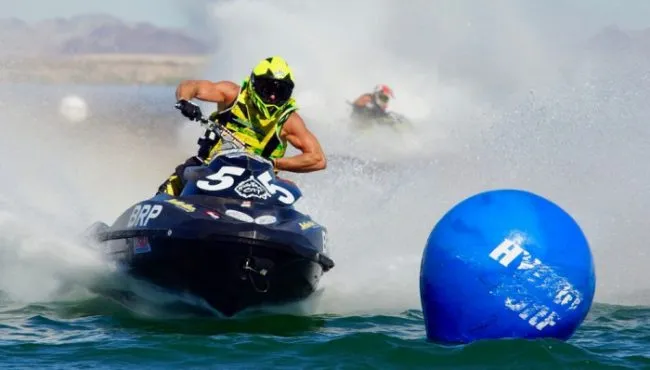
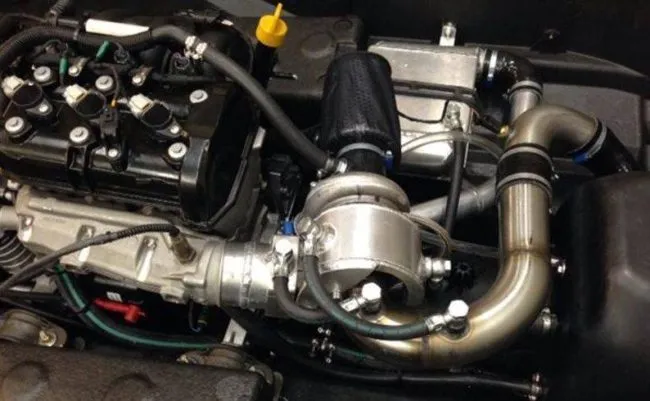
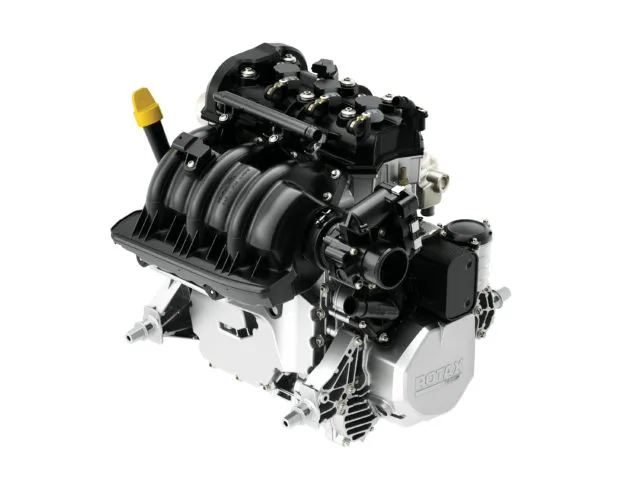
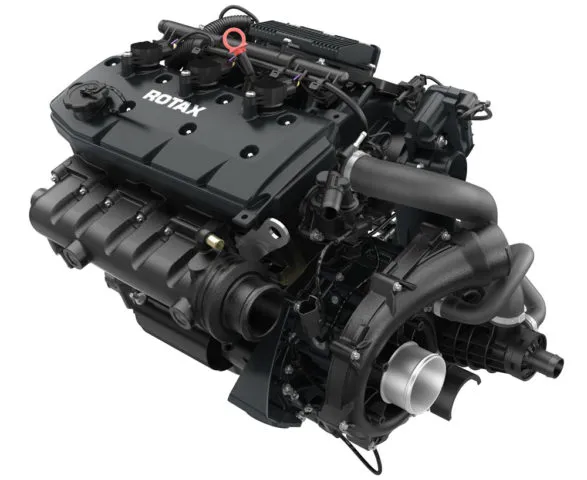
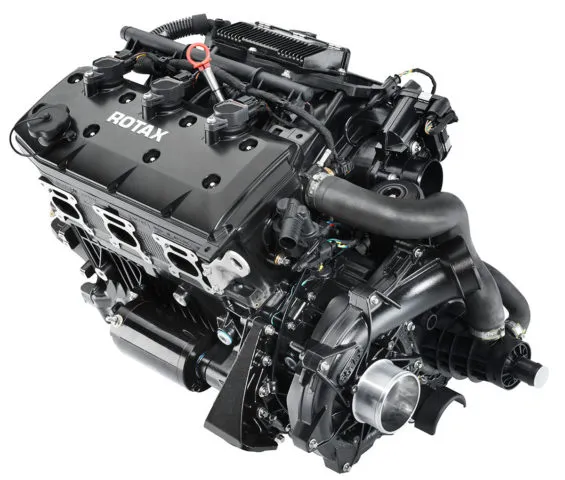
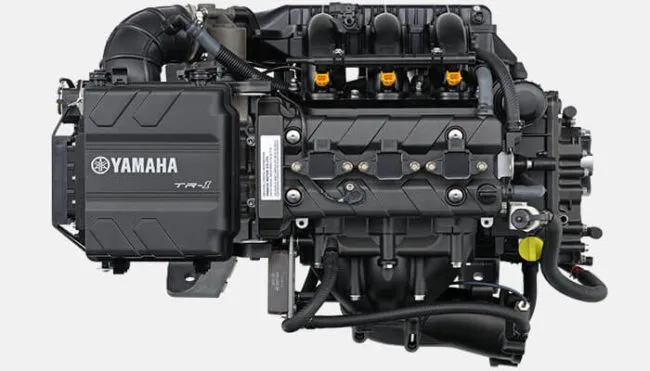
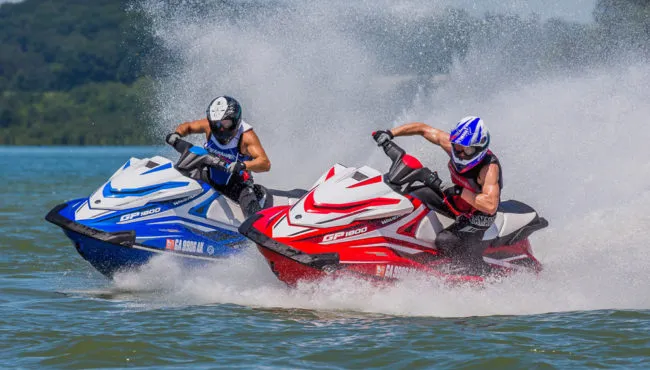
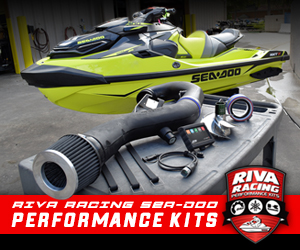



One of the best articles I’ve rerad on HP/# ratios and the new craft data was awesome.
Keep up the great work Rusty, this article was exemplary.
Great article, really well written!
But to make power to weight ratio make sense you really need to use kilogram as the weight reference.
All high performance vehicles aim to achieve a ratio of 1:1 and the best machines out there actually do or almost do that.
An RXP is 0.35 : 1 in your example. and 0,78 : 1 if you use kg. Makes more sense right?
So you should use a 1000kg car with a 1000hp engine as your example. or a 220kg motorbike with 200hp, or a RXP at 390kg with 300/350hp. This makes it easier to relate to the 1-1 ratio, and it certainly lets us under stand how crazy Kasza´s 2-1 ratio ski is !
Join the rest of the world and the metrical system Makes 1:1 ratios almost achievable for real life machines. 🙂
Keep up the good work!
That’s the joy of being in the US. Our refusal to accept KG, Celsius, etc. makes it difficult for the rest of the world.
Great article. I’ve been maintaining a spreadsheet with all PWC power to weight ratios since about 2003. I bought a lake place and wanted the to get the fastest stock ski available. Turns out that the Polaris Pro 785 had the highest PWR available back then. It still has the highest PWR of any stock 2 stroke. I did adjust the figure to include my 180 lb weight to get more accurate numbers to compare.
The 4 strokes have much higher PWR, but I really prefer the smaller lighter hulls because they’re great for jumping wakes! However I was really surprised to read about the turbo kit for the Spark. Need to look into that.
I’ve also been reading about the 1200 triple conversions for the Wave Blaster B1. Very impressive too.
[…] The best power-to-weight ratios can be found in modified racing watercraft and have a stunning ratio of 1. […]